The stands need ears: about the inaccuracy of measurements of the frequency response of headphones
Today, many people buy headphones blindly (dumb), without listening, relying on the technical characteristics and frequency response graphs carefully laid out by users of numerous audioforums. Especially such purchases are characteristic of online stores. It is well known that the frequency characteristics of the sound determines the frequency response. At the same time, if you try, on one and the same model you can find several completely different graphs with significant differences, which is alarming.
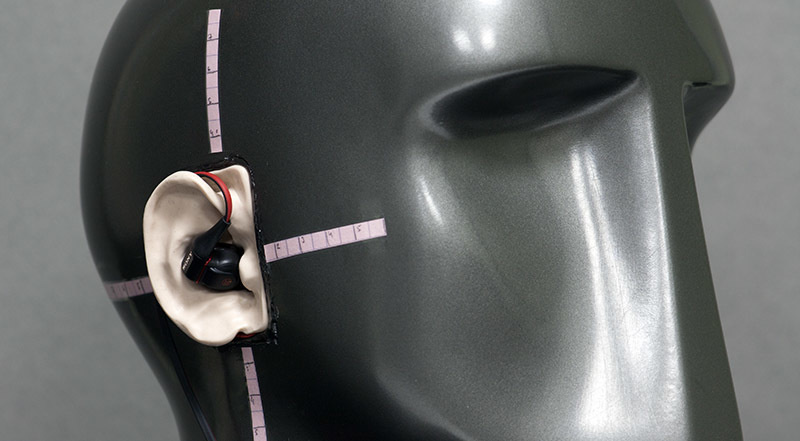
Not infrequently, the result of the purchase becomes disappointment and discrepancy between the pair purchased and the expectations that arose when viewing the chart - they wanted to say, they were bass, and they distinguish more the middle, etc. In addition, when a subjective comparison of different models of headphones with the same or very close frequency response graphs, there is a significant difference in the subjective assessment of sound.
Under the cut description of one of the most common reasons, ways to solve it and a few recommendations for self-development of the stand.
I believe many have already realized that the key problem lies in the method of measurement. It is about her and will be discussed. When measuring, a “bare” microphone is most often used, which is not the case in real conditions, since the headphones are pressed to the head with some force or another. In addition, sound waves before the impact on the eardrum is captured by the auricle and passes through the external auditory canal. It is natural that the test results without these parameters do not demonstrate what it really is.
The reason for the creation of this post was the master's thesis of Marco Hiipacka “Measuring equipment and technical modeling of ear acoustics”, written at the Department of Acoustic Signal Processing at the Faculty of Communication and Automation of the Helsinki University of Technology, as well as with the experiments of videobloggers stalker29218 and Alexander TheHitty, who paid attention to this problem.
According to Marco Hiipakka, the acoustic characteristics of the ear itself are not taken into account when measuring the frequency response. It is well known that the properties of hearing are extremely individual and are directly dependent on our anatomical features. As a rule, measurements of the acoustic parameters of the headphones (as well as other audio equipment) are carried out without taking into account the anatomy.
Comparison of the frequency response of headphones (especially the closed type) using a “bare” microphone reveals a significant difference with the results when using the stand, where the cushions are pressed to the plane. The stand with imitation of the external auditory canal and the auricle demonstrates even greater differences.
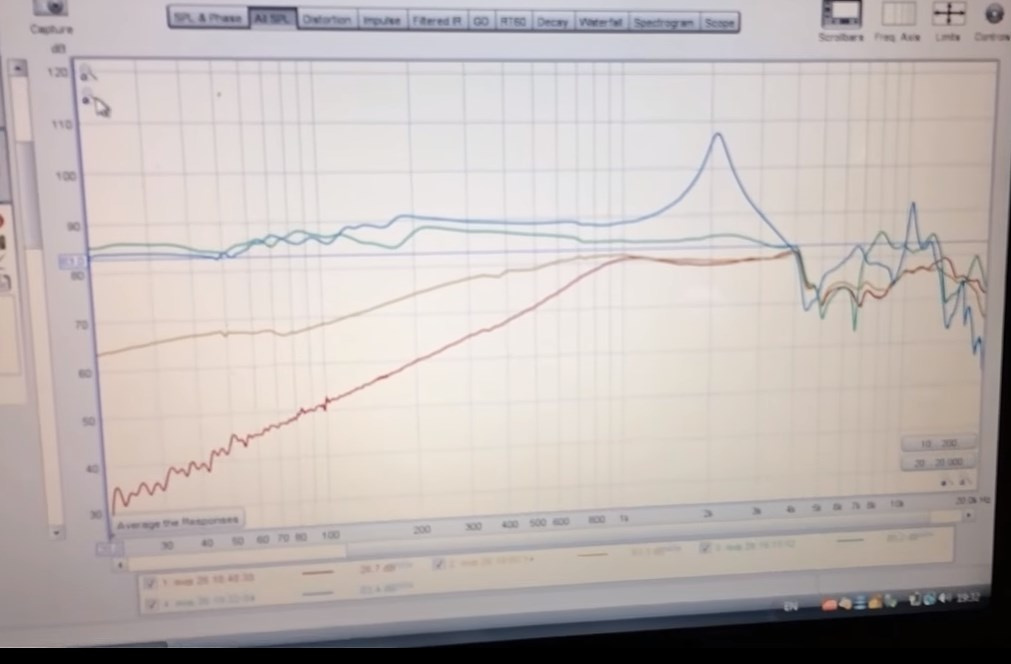
Red - open stand;
Yellow - pressing the ear cushions to the foam;
Green - Silicone imitation of the skin;
Blue - silicone + auricle + external ear canal.

Outdoor Stand Alexander TheHitty
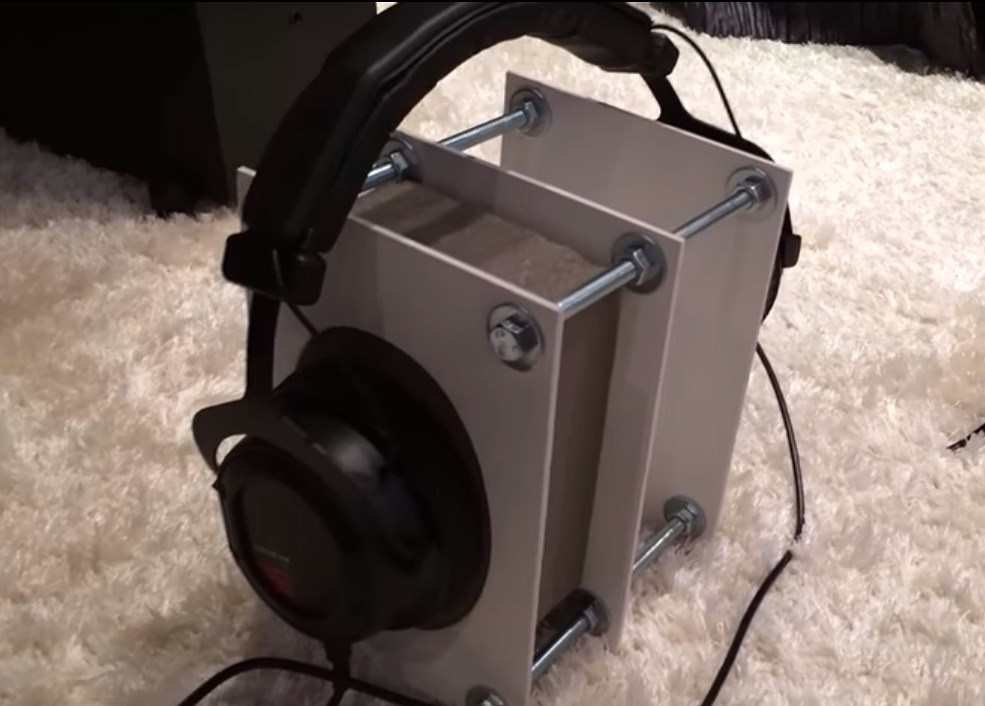
Indoor Stand Alexander TheHitty
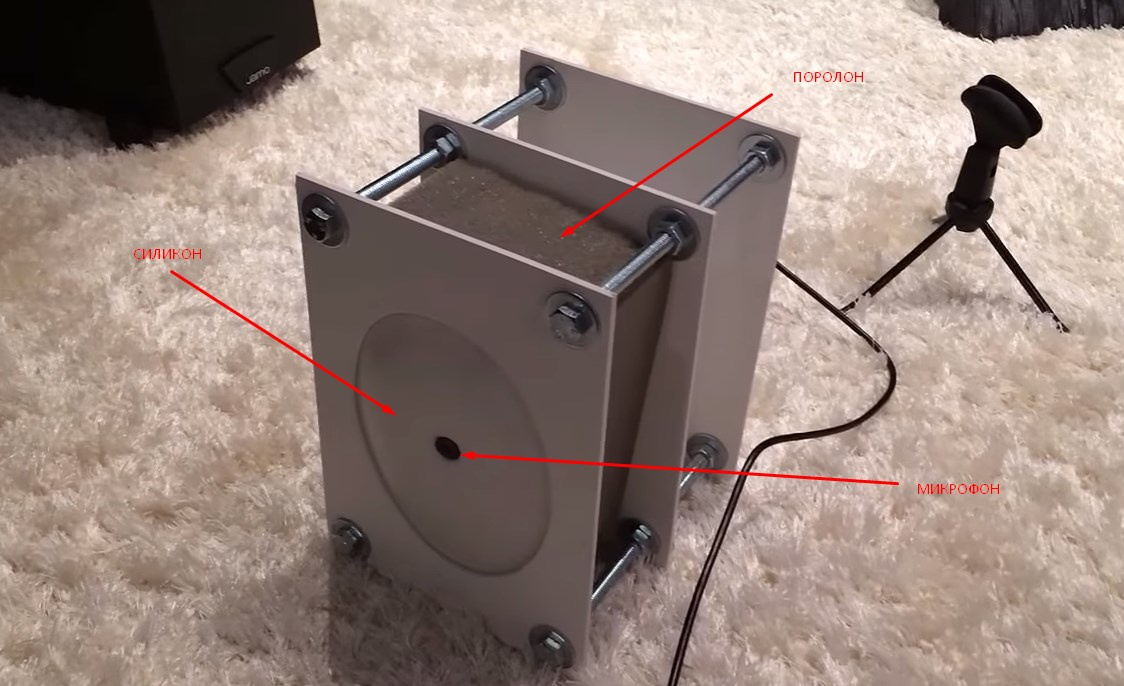
Stand Alexander TheHitty with simulated skin
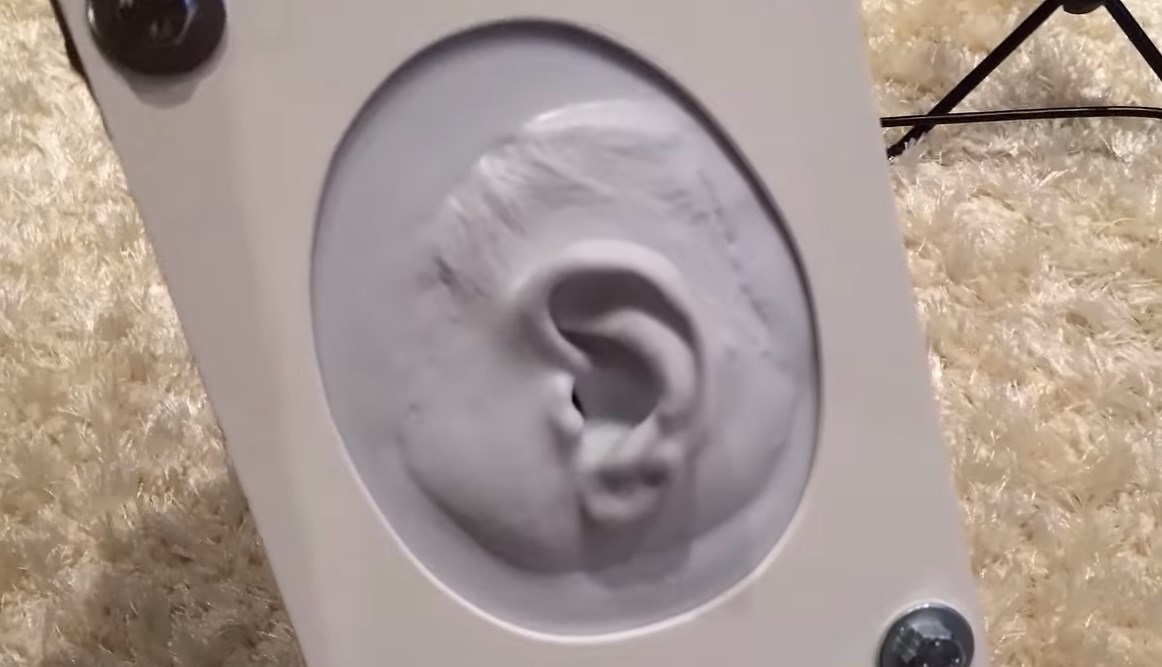
Stand Alexander TheHitty with imitation skin, the external auditory canal and the ear
As can be seen from the graphs published by Alexander when using more reliable methods, there are significant changes. The most significant effect on the sound is the enclosed space, as well as the length and width of the external auditory canal. As the length of the passage increases, the resonance peak arising in the range between 2 and 4 kHz shifts toward lower frequencies. When reducing the width, on the contrary, in the direction of the RF, which is clearly seen in the graphs.
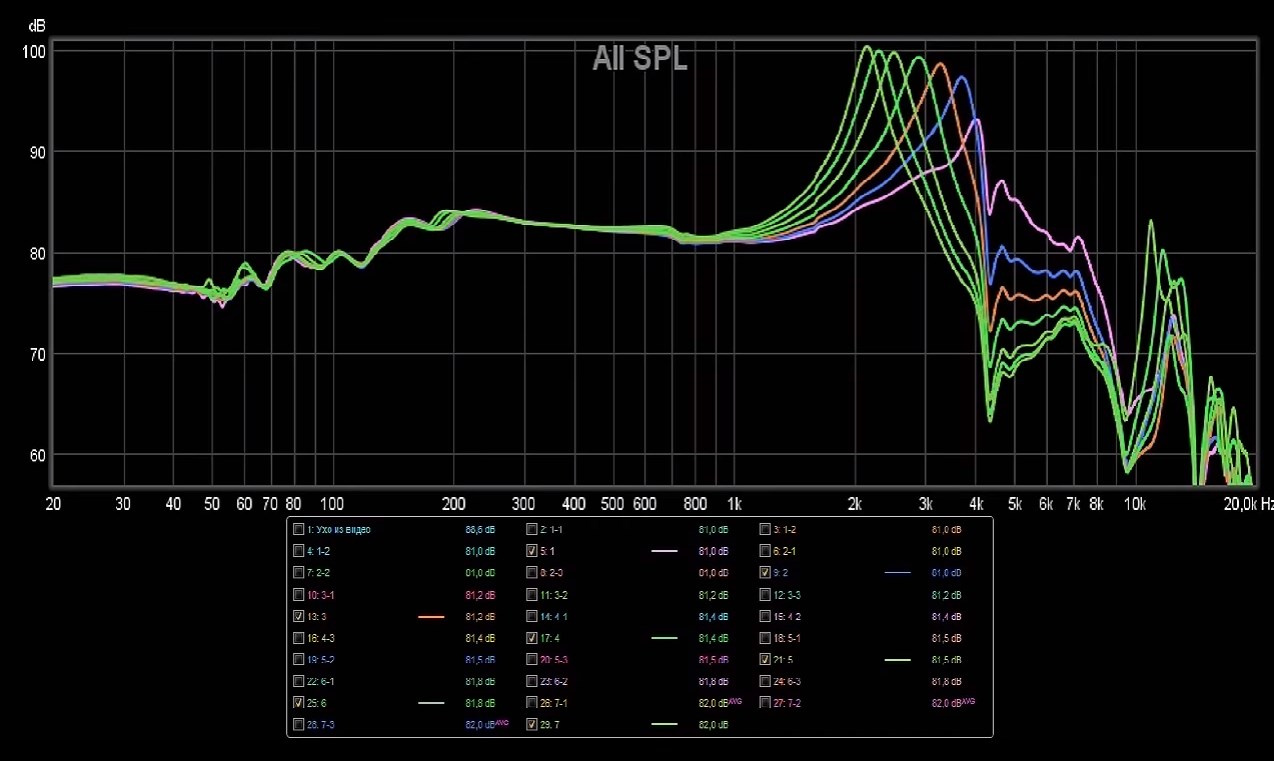
Graph results Alexander TheHitty
Among other things, possible changes in the frequency response caused by the deposition of earwax in the external auditory canal. As the graph below shows, the presence of sulfur (simulator used - wax) to a certain extent affects the curve.

Research data by Marco Hiipacka and Alexander TheHitty coincide according to the results of test measurements of the frequency response in the main points.

Adecs with three different frequency
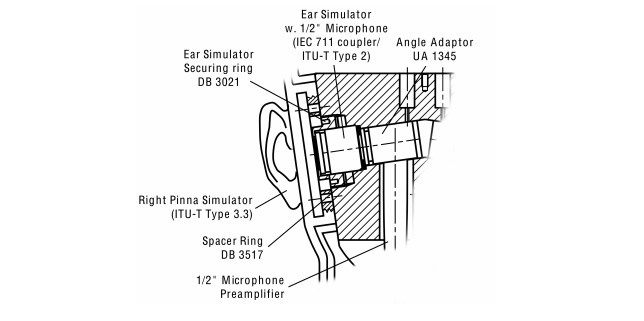
One of the stands of Marco Hiipacka in the section.
Everything that has been described mainly concerns full-size models, and is particularly useful for measurements with closed and semi-closed headphones. In his work, Marco Hiipakka also proposed original ideas for in-ear headphones. Here are some examples that allow you to measure without the use of a large-scale stand.
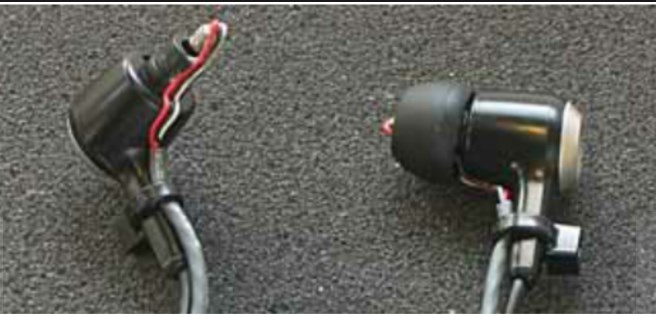
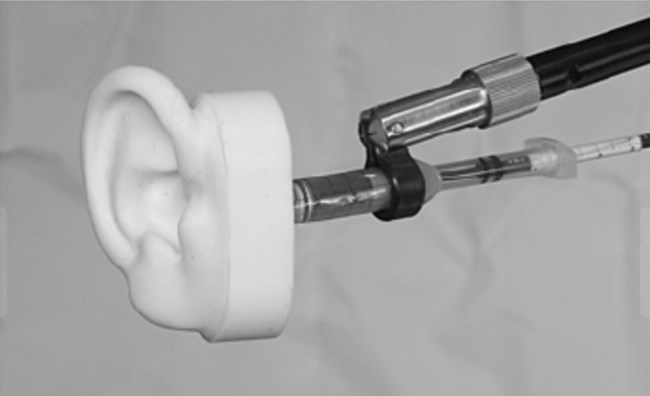
Before modeling the auricle and the external auditory canal, it makes sense to ensure proper sound insulation and mimic the skin. As an insulator, you can use any sound-absorbing material, for example, foam rubber, as Alexander TheHitty did.

Silicone with a density of 29 - 30 units is usually used as a skin simulator. by Shore.
The same silicone can be used to create the simulator of the auricle and external auditory canal.
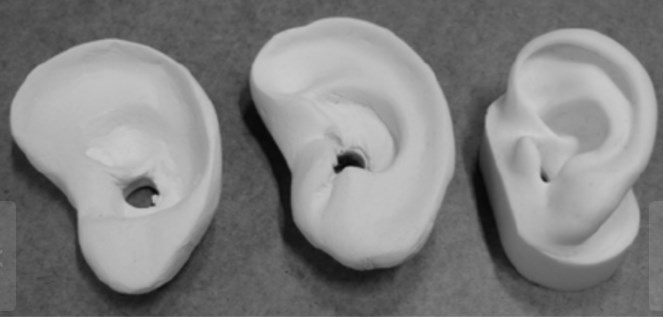
It should be borne in mind that it is quite difficult to take an impression from the ear canal, it is easier to manufacture a hollow silicone tube with 2 bends, narrowing, 28 mm long and 5-7 mm wide (average parameters for the human ear).

Marco Hiipakka used plastic tubes, and in a number of studies he limited himself to a standard syringe (in cases it was necessary to measure the frequency response of in-channel headphones ).

As a fastener for this whole business, you can use plywood, drywall, chipboard or something else. The main condition is the isolation of the external ear canal simulator and the tight fixing of the microphone.
Given the low accuracy of measurements, it is naive to believe that you can understand how the headphones sound , using the results of frequency response tests found in the network. It is also foolish to believe that any measurements do not reflect the real picture, and the sound should be evaluated only subjectively. When obtaining test results, it is important to know how this test was carried out and how much the human anatomy took into account, how “pure” the study is (this applies not only to the frequency response, but to SOI, IMD and other characteristics). Before buying headphones, you should still listen to them, for which, in fact, numerous showrooms have been opened, where it can be done comfortably.

Not infrequently, the result of the purchase becomes disappointment and discrepancy between the pair purchased and the expectations that arose when viewing the chart - they wanted to say, they were bass, and they distinguish more the middle, etc. In addition, when a subjective comparison of different models of headphones with the same or very close frequency response graphs, there is a significant difference in the subjective assessment of sound.
Under the cut description of one of the most common reasons, ways to solve it and a few recommendations for self-development of the stand.
I believe many have already realized that the key problem lies in the method of measurement. It is about her and will be discussed. When measuring, a “bare” microphone is most often used, which is not the case in real conditions, since the headphones are pressed to the head with some force or another. In addition, sound waves before the impact on the eardrum is captured by the auricle and passes through the external auditory canal. It is natural that the test results without these parameters do not demonstrate what it really is.
The reason for the creation of this post was the master's thesis of Marco Hiipacka “Measuring equipment and technical modeling of ear acoustics”, written at the Department of Acoustic Signal Processing at the Faculty of Communication and Automation of the Helsinki University of Technology, as well as with the experiments of videobloggers stalker29218 and Alexander TheHitty, who paid attention to this problem.
Problems and solutions
According to Marco Hiipakka, the acoustic characteristics of the ear itself are not taken into account when measuring the frequency response. It is well known that the properties of hearing are extremely individual and are directly dependent on our anatomical features. As a rule, measurements of the acoustic parameters of the headphones (as well as other audio equipment) are carried out without taking into account the anatomy.
Comparison of the frequency response of headphones (especially the closed type) using a “bare” microphone reveals a significant difference with the results when using the stand, where the cushions are pressed to the plane. The stand with imitation of the external auditory canal and the auricle demonstrates even greater differences.

Red - open stand;
Yellow - pressing the ear cushions to the foam;
Green - Silicone imitation of the skin;
Blue - silicone + auricle + external ear canal.

Outdoor Stand Alexander TheHitty

Indoor Stand Alexander TheHitty

Stand Alexander TheHitty with simulated skin

Stand Alexander TheHitty with imitation skin, the external auditory canal and the ear
As can be seen from the graphs published by Alexander when using more reliable methods, there are significant changes. The most significant effect on the sound is the enclosed space, as well as the length and width of the external auditory canal. As the length of the passage increases, the resonance peak arising in the range between 2 and 4 kHz shifts toward lower frequencies. When reducing the width, on the contrary, in the direction of the RF, which is clearly seen in the graphs.

Graph results Alexander TheHitty
Among other things, possible changes in the frequency response caused by the deposition of earwax in the external auditory canal. As the graph below shows, the presence of sulfur (simulator used - wax) to a certain extent affects the curve.

Research data by Marco Hiipacka and Alexander TheHitty coincide according to the results of test measurements of the frequency response in the main points.

Adecs with three different frequency

One of the stands of Marco Hiipacka in the section.
Everything that has been described mainly concerns full-size models, and is particularly useful for measurements with closed and semi-closed headphones. In his work, Marco Hiipakka also proposed original ideas for in-ear headphones. Here are some examples that allow you to measure without the use of a large-scale stand.


From what to do it
Before modeling the auricle and the external auditory canal, it makes sense to ensure proper sound insulation and mimic the skin. As an insulator, you can use any sound-absorbing material, for example, foam rubber, as Alexander TheHitty did.

Silicone with a density of 29 - 30 units is usually used as a skin simulator. by Shore.
The same silicone can be used to create the simulator of the auricle and external auditory canal.

It should be borne in mind that it is quite difficult to take an impression from the ear canal, it is easier to manufacture a hollow silicone tube with 2 bends, narrowing, 28 mm long and 5-7 mm wide (average parameters for the human ear).

Marco Hiipakka used plastic tubes, and in a number of studies he limited himself to a standard syringe (in cases it was necessary to measure the frequency response of in-channel headphones ).

As a fastener for this whole business, you can use plywood, drywall, chipboard or something else. The main condition is the isolation of the external ear canal simulator and the tight fixing of the microphone.
Total
Given the low accuracy of measurements, it is naive to believe that you can understand how the headphones sound , using the results of frequency response tests found in the network. It is also foolish to believe that any measurements do not reflect the real picture, and the sound should be evaluated only subjectively. When obtaining test results, it is important to know how this test was carried out and how much the human anatomy took into account, how “pure” the study is (this applies not only to the frequency response, but to SOI, IMD and other characteristics). Before buying headphones, you should still listen to them, for which, in fact, numerous showrooms have been opened, where it can be done comfortably.
